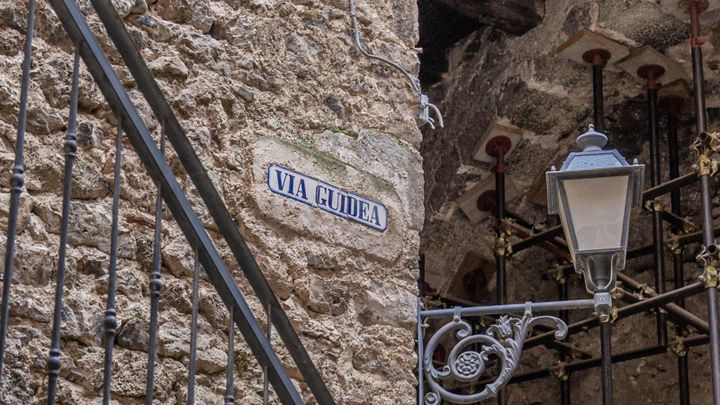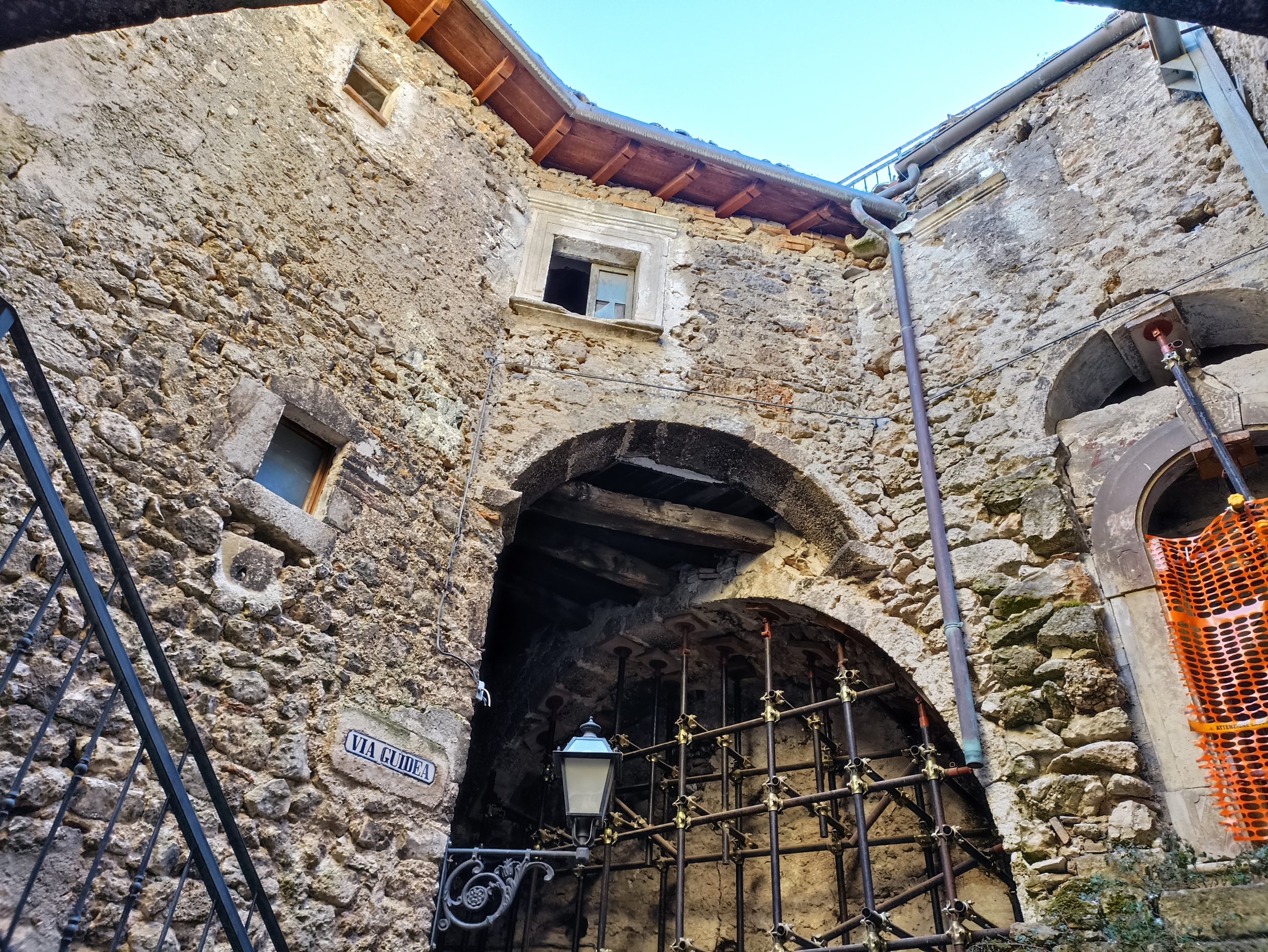Hidden among the stones of Civitaretenga is the history of a past that is not easy to read, that of an ancient ghetto, in the area known to the inhabitants as ru bbùscë, even though 'ghetto' is not the correct toponym, since it is a settlement predating the first ghetto in history, that of Venice. The Jewish presence is linked to the area's small rural economy: the dexterity always shown in the trade of peasant products, such as wool, found great impetus with the sought-after production of saffron, which arrived in the Navelli area in the early 14th century thanks to the Dominican monk with the typical Navelli surname, Santucci.
The openness of the society of the time allowed Jewish families to acquire dwellings and set up a small community in Civitaretenga, testified to by the toponymy of Via and Piazza Giudea, with walled houses leaning against each other, full of covered passageways and porticoes, excellent places for their flourishing workshops. The small living area was practically a single street, with two well-defined entrances and, if necessary, built with special doors, perhaps to keep their treasures inside and ensure security.


It was certainly not a poor community, which was also animated by a synagogue, overlooking Piazza Giudea, in today's Palazzo Perelli, which benefited from the proximity of the sheep-track. Unfortunately, wealth and prosperity did not last for long: as on several occasions throughout Europe, the Jewish community in the small village fell into disgrace and was opposed.
It is in this period that the birth of the first 'monti di pietà' (pawnshops), forerunners of the microcredit of modern banks, which also inspired the famous Sienese bank, Monte dei Paschi, and it seems that a monte di pietà was also to host the small community of Civitaretenga, precisely to help the peasants who could not cope with the loans granted by Jewish merchants.
Meanwhile, those same gates that had defended them were soon used to keep them separated and locked up overnight. In many other areas, Jews were no longer allowed to own land, only houses, and soon not even that. Between the 15th and 16th centuries, also thanks to the calls of St John of Capestrano and St Bernardine of Siena, they were accused of usury, pointed at as being responsible for what they considered to be one of the worst evils in the world, until the expulsion decree of 1510. The ghetto thus became a small territory to be colonised, in which to erase the traces of a different faith in clear contradiction with Christianity.
Here is how Via and Piazza Giudea became Via and Piazza Guidea, while we can still see the stone portal of Palazzo Perelli superimposed on an older arch, as well as simple small doors with a stone lintel mounted on an old lintel, and more than anywhere else reigning the Cristogram IHS - Iesus Hominum Salvator so beloved of Saint Bernardino himself, underlining how those were from that time onwards the homes of Christians and no longer Jews. Over the years, and particularly after World War II, the ghetto remained progressively uninhabited, almost totally ruined, until an attempt was made to put a stop to this state of neglect with an ambitious recovery project launched by the Navelli municipality.
Interrupting this restoration process was the 2009 earthquake, which significantly destroyed the beautiful views of the ghetto and the nearby medieval tower, which had completely collapsed, and trapped the ghetto in a red zone.
